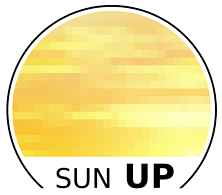Introduction
Low-level attenuation and sunshape are two factors strongly related with the atmospheric components in the path between the Sun and the solar collector or the solar system. The atmospheric components are not homogeneously distributed in the sun path, and thus, they various solar technologies in different ways. In the case of solar thermal electricity two main parts in the solar path can be identified: the part between the top of the atmosphere (TOA) and the solar reflector; and the part between the solar reflector and the solar receiver. As the distance between the solar reflector and the solar receiver increases the the low-level attenuation also increases in the system. Therefore solar tower systems are strongly affected by low-level attenuation.
Low level attenuation is an important factor for the performance of central receiver concentrating solar power plants. The low-level attenuation affects the transmittance from the focusing mirrors (the heliostats) to the central receiver. It can occur either due to fog, water vapor or low-level aerosols. Aerosol particles are solid and liquid particles in the atmosphere that are not clouds or precipitation. Low level attenuation can vary independently from the overall atmospheric aerosol attenuation and therefore need to be assessed at the location.
A portion of the direct normal irradiance (DNI) that is scattered as it passes through the atmosphere is scattered into the forward direction and is included in the DNI as measured by pyrheliometer. These have a field of view of ≈5° and DNI measurements during cloud-free conditions include irradiance from this scattered DNI depending on AM and AOD. The solar beam does not only go in a straight line but covers an angular range around the direction of the sun. This circumsolar irradiance initially occurs since the sun disk covers an angular range and can be exacerbated by aerosols and thin ice (cirrus) clouds. The angular distribution of solar radiance around the sun disk is called the sunshape.
While the sunlight coming directly from the solar disk can be concentrated very efficiently by large scale solar thermal electric facilities, systems with high concentration can only partly use this circumsolar radiation. As different solar concentrating designs can utilize the circumsolar radiation differently and as the collector efficiency varies continuously with the angular distance from the sun center, it is important to characterize and understand the sunshape in order to accurately assess the solar potential of a given site. The sunshape can be roughly described with scalar parameters as the circumsolar ratio and the circumsolar contribution (the contribution of the circumsolar irradiance to DNI for specific angular intervals). The effect of the sunshape on the plant performance is most relevant for highly concentrating systems.
(B) Feasibility
For the feasibility phase more detailed information on the low-level attenuation should be collected. The clear sky DNI can be used as an indicator of the expected extinction by translating the clear sky transmittance of the total atmosphere to the low level extinction under the assumption of a certain aerosol height profile (Hanrieder et al., 2016). If the resulting low-level attenuation is low, the assumption of the aerosol height distribution has a low influence, and the estimated low-level attenuation is sufficient for the yield analysis. Higher estimated attenuation levels indicate that an on-site measurement campaign is required. Such measurements are possible with different techniques as summarized by (Hanrieder et al., 2017) of which at least three are commercially available. If nearby visibility measurements are available these give information on the low level attenuation can be used (Hanrieder et al., 2017; Mishra et al., 2020). A minimum of one year of data should be collected to ensure that the data represents all seasonal variations. High relative humidity conditions enhance the attenuation of many types of aerosols, which affects the low-level attenuation. Therefore, sites with lower relative humidity are often preferable. In deserts with abundant dust aerosols lower wind speeds are also preferable.
If estimations from the pre-feasibility phase do not clearly indicated narrow sunshapes, measurements should be carried out. The above-mentioned measurement systems can be established at few selected sites to characterize the solar resource. Sunshape measurements from similar climates and nearby sites should also be considered (Bendt et al., 1979).
Depending on the result of the sunshape and attenuation analysis a choice can be made either to have a single very tall central tower surrounded be an extended area of heliostats, more than one tower with smaller areas of heliostats around them or another CSP technology that is less affected by the sunshape and the attenuation, e.g., parabolic troughs.
The recommended features for the low-level attenuation and sunshape characterization for this application are the following:
- Input parameter for calculation: DNI, AOD, visibility.
- Time resolution: daily.
- Period of time: long term.
| Users | ||||||||
| Proyect developers needs at diferent plant stages | Other users | |||||||
| Category of product service | (A) Pre-feasibility | (B) Feasibility & Design | (C) Due Diligence Financing | (D) Plant Accep-tance Test | (E) Systems or Plant Operations | (F) Grid operators | (G) Policy makers | (H) Education / Outreach |
| LOW LEVEL ATTENUATION AND SUNSHAPE | ✅ | ✅ | ✅ | ✅ | ✅ | ❌ | ✅ | ✅ |
|---|---|---|---|---|---|---|---|---|
Low level attenuation measurements and characterization.
Sunshape measurement and characterization
The relevant features for the low-level attenuation and sunshape characterization in the field of solar energy are:
- Input parameter for calculation.
- Type of measurements.
- Time resolution.
- Period of time.

